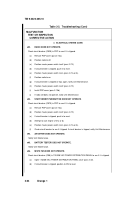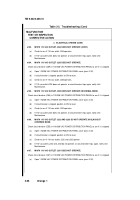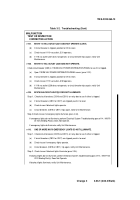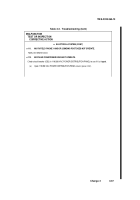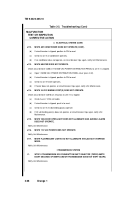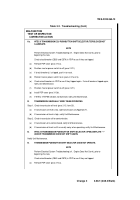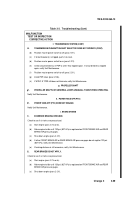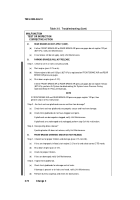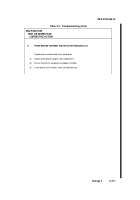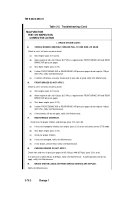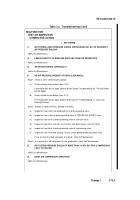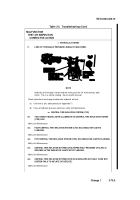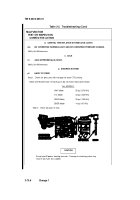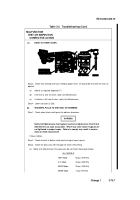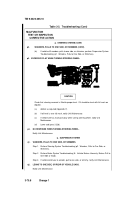TM-9-2320-365-10 - Page 608 of 836
TM 9-2320-365-10
3-70
Change 2
Table 3-2.
Troubleshooting (Cont)
MALFUNCTION
TEST OR INSPECTION
CORRECTIVE ACTION
i2.
REAR BRAKES DO NOT APPLY (CONT).
(d)
If either FRONT BRAKE AIR or REAR BRAKE AIR pressure gages do not register 120 psi
(827 kPa), notify Unit Maintenance.
(e)
If rear brakes still do not apply, notify Unit Maintenance.
i3.
PARKING BRAKE(S) WILL NOT RELEASE.
Step 1.
Check to see if air tanks are pressurized.
(a)
Start engine (para 2-21a or b).
(b)
Allow engine to idle until 120 psi (827 kPa) is registered on FRONT BRAKE AIR and REAR
BRAKE AIR pressure gages.
(c)
Shut down engine (para 2-21f).
If either FRONT BRAKE AIR or REAR BRAKE AIR pressure gages do not register 120 psi
(827 kPa), perform Air System troubleshooting (Air System Loses Pressure During
Operation/Slow Air Pressure Build Up).
.
NOTE
If FRONT BRAKE AIR and REAR BRAKE AIR pressure gages register 120 psi, then
perform step 2 of this malfunction.
Step 2.
Are front and rear gladhands secure and free from damage?
(a)
Check front and rear gladhands are properly secure and free from damage.
(b)
Check front gladhands do not have clogged vent ports.
If gladhands are damaged or clogged, notify Unit Maintenance.
If gladhands are undamaged and unclogged, perform step 3 of this malfunction.
Step 3.
Does parking brake release?
If parking brake still does not release, notify Unit Maintenance.
i4.
FRONT BRAKES OVERHEAT AND/OR DO NOT RELEASE.
Step 1.
Check tires for proper inflation and damage (para 2-15, item 38).
(a)
If tires are improperly inflated, start engine (2-21a or b) and select correct CTIS mode.
(b)
Shut down engine (para 2-21f).
(c)
Check for proper inflation.
(d)
If tires are damaged, notify Unit Maintenance.
Step 2.
Inspect front gladhands.
(a)
Check front gladhands for damage and air leaks.
If damage is present or air leaks are heard, notify Unit Maintenance.
(b)
Remove dummy couplings and check for obstructions.
Back to Top

